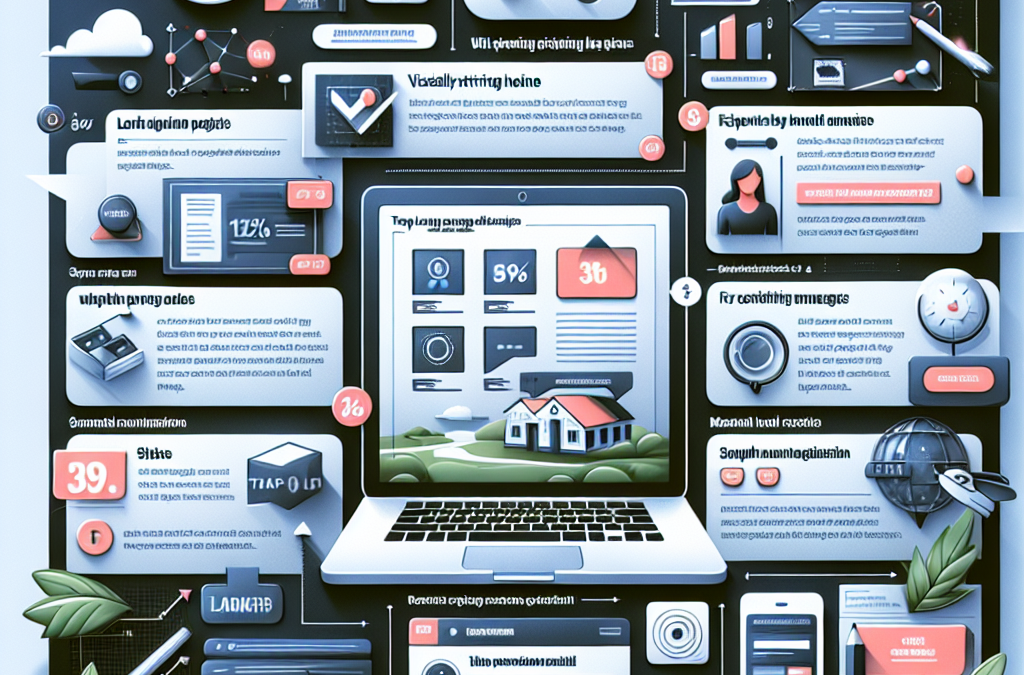Top 7 Landing Page design tips for Higher Conversions
Introduction
We’ve all been there. You click a link and land on a page that just doesn’t grab you. Maybe the colors are off, or the text is too tiny. What if I told you that the design of a landing page can make or break your business? Yes, a well-crafted landing page is your key to better conversions. In fact, mastering Landing Page Design Tips can be the difference between a visitor bouncing off your site or becoming a loyal customer.
Landing pages are the first thing many customers see. They are like the front door of a store. A welcoming door can draw people in, while a cluttered one can send them running. Recent studies have shown that companies with optimized landing pages can see conversion rates soar by up to 300%. Isn’t that incredible?
In this article, we’ll explore Landing Page Design Tips that can help you create pages that convert visitors into customers. We’ll discuss common mistakes, actionable design tips, and how user experience plays a role in your success. So, let’s dive in and transform those clicks into customers!
What are Landing Page Design Tips?
Definition and Significance
Landing pages are web pages designed to capture leads or drive sales. They focus on a single objective, like signing up for a newsletter or making a purchase. Effective Landing Page Design Tips ensure that these pages are clear, engaging, and easy to navigate.
Why are these tips so important? Well, imagine walking into a store with messy aisles and unclear signs. You’d probably leave, right? The same goes for online. A well-designed landing page guides users smoothly to take action.
Examples of Successful Landing Pages
- Dropbox: Their landing page clearly states what they offer with a simple sign-up form. It’s clean and effective.
- Airbnb: They use stunning visuals and a straightforward call to action. You know exactly what to do next.
- Slack: Their page focuses on benefits with clear messaging and a simple form. This keeps users engaged.
These examples show how great design can improve user experience and boost conversions.

Common Challenges with Landing Page Design Tips
Challenges Overview
Even with the best Landing Page Design Tips, many businesses face hurdles. Here are a few common challenges:
- Poor User Interface: If the layout is confusing, users may leave without taking action.
- Lack of Clear Calls-to-Action: If users don’t know what to do next, they won’t do anything.
- Ineffective Messaging: If the message doesn’t resonate, visitors may not feel compelled to act.
Solutions
So, how do we overcome these challenges?
- testing and optimization: Regularly test different designs and messages to see what works best.
- User Feedback: Ask users what they like or dislike about your page.
- Simplicity is Key: Keep your design clean and focused on the main goal.
By addressing these challenges, we can create landing pages that not only attract visitors but also convert them.
How to Get Started with Landing Page Design Tips
Step-by-Step Guide
Ready to create a high-converting landing page? Here’s a simple guide to get you started:
- Define Your Goals: What do you want visitors to do? Sign up? Buy a product?
- understand your audience: Who are you targeting? Knowing your audience helps you craft a message that connects.
- craft compelling content: Use clear, persuasive language. Highlight benefits, not just features.
- Utilize the Right Design Elements:
- Color Schemes: Use colors that evoke emotions. For example, blue can create trust.
- Images and Videos: Visuals should enhance your message, not distract from it.
- Create Clear Calls-to-Action: Make it obvious what you want visitors to do. Use buttons like “Sign Up Now” or “Get Started”.
- optimize for mobile: Many users will visit from their phones. Make sure your landing page looks good on all devices.
- Track and Analyze: Use tools to track user behavior. Analyze what works and what doesn’t.
By following these steps, we can create landing pages that not only look good but also drive action.
Top 7 Landing Page Design Tips for Higher Conversions
1. Keep It Simple
Less is more. Too much information can overwhelm visitors. Focus on one clear message.
2. Use strong headlines
Your headline is the first thing people see. Make it catchy and relevant. Grab attention!
3. Prioritize Load Time
No one likes waiting. A slow page can drive users away. Aim for fast loading times.
4. Include Social Proof
Testimonials and reviews build trust. Show visitors that others love your product.
5. Create Urgency
Limited-time offers encourage quick decisions. Use phrases like “Only 2 left!” or “Sale ends soon!”
6. Test Different Versions
Try A/B testing to see what works. Change headlines, colors, or layouts and see the impact.
7. Use Clear Visual Hierarchy
Guide the user’s eyes with size and contrast. Make important elements stand out.
Conclusion
Creating landing pages that convert might seem tricky, but with the right Landing Page Design Tips, we can boost our chances. Remember to keep it simple, use strong headlines, and prioritize user experience. These tips can transform your landing pages from mundane to magnificent.
Are you ready to implement these tips? Your next conversion could be just a page away!
FAQs
1. What is a landing page?
A landing page is a web page focused on a specific goal, like capturing leads or selling products.
2. Why do landing pages matter?
They help turn visitors into customers by guiding them toward a desired action.
3. How can I improve my landing page?
Follow the tips mentioned, such as keeping it simple and using strong calls to action.
4. What is A/B testing?
A/B testing involves comparing two versions of a page to see which one performs better.
5. How often should I update my landing page?
Regularly review and update your landing page based on performance data and user feedback.
Resource Links:
- unbounce.com: Landing Page Best Practices · 1. Ensure your messaging matches your ads · 2. Keep the action above the fold · 3. Use directional cues to direct the eye · 4. Show …
- mailchimp.com: Landing pages can be a powerful tool to nurture new customers, educate people about your products, and drive conversions.
- kalzumeus.com: … Landing pages should have one goal. My new one aims to capture a sign-up to the trial of the online version of the software. That is it.

